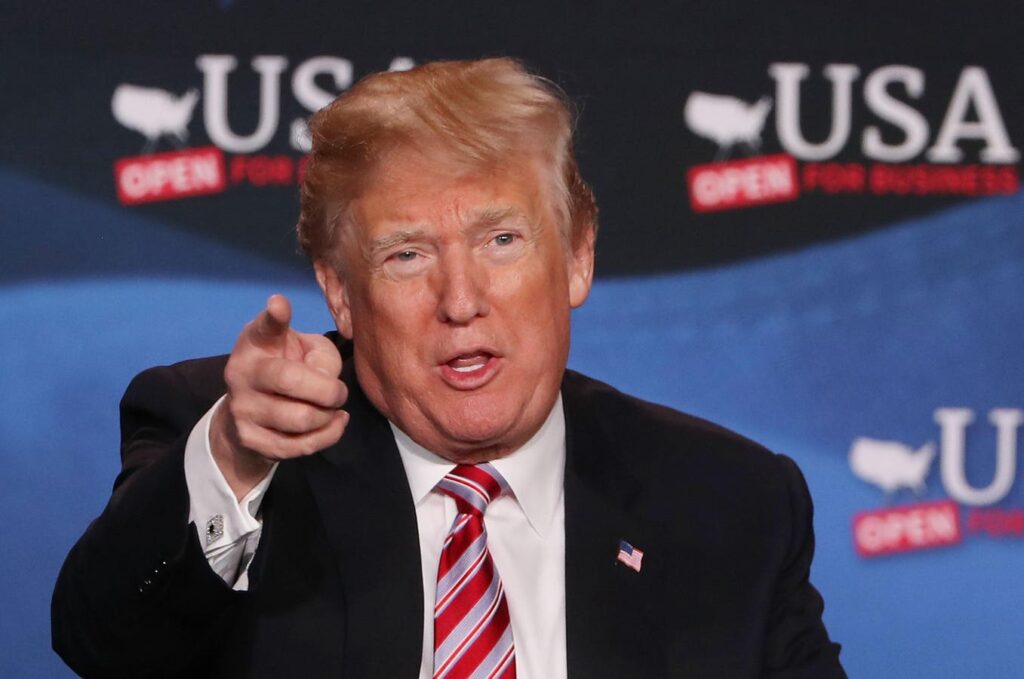President Donald Trump has continued to suggest tariffs could substantially reduce or take the place of income taxes. This time he has targeted Americans earning less than $200,000 per year for relief. If that sounds like political alchemy—turning economic policy lead into tax policy gold—that’s because it is.
Tariffs Are Just Taxes in Disguise
Setting aside the sheer logistical impossibility of financing the federal government through tariffs alone, it is unclear what exactly would be achieved. Even if we assume, against all empirical evidence, that the numbers pencil out—factories immediately booming, jobs multiplying, and tariff revenue flowing—it simply means the source of government revenue would change without the amount significantly changing. Today, taxpayer checks are made out to the Internal Revenue Service—under President Trump’s vision, those checks would simply be made out to skyrocketing store shelf prices and import tariffs. Different ink, same debit from the bank account.
Economically, tariffs function as a consumption tax. They raise the cost of imported goods and, in so doing, increases prices for consumers. This disproportionately burdens lower- and middle-income Americans—precisely the voters President Trump is intending, at least rhetorically, to help. Tariffs are taxes, just hidden in the checkout line instead of being spelled out on a W-2.
Different Bill Collector, Same Bill
There is little to gain here save for symbolism. President Trump appears to believe that Americans dislike the act of paying taxes more than they are struggling with the cost of living. By shifting the burden invisibly into everyday transactions, perhaps the logic goes, the tangible pain of an April 15th tax bill is disaggregated into a series of small, deniable pains and externalizable pains at the grocery store. Out of sight, out of mind—or so the political calculation appears to go.
History, however, offers a warning. In the late 19th century, the US government was indeed funded primarily through tariffs—exactly the economic system President Trump appears to intend to recreate. It was an era marked by economic inequality, crony capitalism, and periodic economic depressions. The income tax, first temporarily introduced by Abraham Lincoln during the Civil War and later permanently established with the passage of the Sixteenth Amendment in 1913, arose precisely because tariffs were seen as both regressive and economically unstable.
Perhaps more to the point, from a revenue standpoint, tariffs are relatively unreliable. A modern economy as large and complex as America’s likely cannot be funded through border taxes alone—and relying on them places the ability for the government to raise revenue squarely in the hands of the very same foreign powers the tariffs are intended to punish.
Even if the White House slapped tariffs on every imported good—and Americans paid them without cutting consumption and exporting countries continued shipping goods without abatement—it would still fall hundreds of billions short of what’s needed to finance Social Security, defense, Medicare, and everything else Washington funds.
Trump’s vision risks recreating the problems that prompted the income tax’s creation in the first place—like the world’s least clamored-for sequel to Groundhog Day. Meanwhile, the so-called “external revenue service” that would oversee these tariffs would in fact be external only in geographical terms, not in cost. Whether the government takes its cut from your paycheck or your grocery bill, you are still footing the bill.
Trump’s Tax Swap Is All Pain, No Gain
There is a deeper political message here. It is better to have Americans grumbling about high prices at Target than to organize against the IRS directly or, even worse, demand tax policy changes and for the rich to pay their fair share. It’s a clever sleight of hand, but one that fails to address the root concern: Americans are angry about the cost of living, not the particular shape their taxes take.
In short, even if Trump’s income tax cut funded by tariffs could work—and it cannot—it wouldn’t solve any of the problems it claims to address. It would merely rearrange the scenery on an economic stage whose production costs are unavoidable.
A serious and policy-driven tax reform conversation would focus not just on how taxes are paid, but who is paying them—or, more importantly, who is not paying them. Until then, replacing a direct tax with an invisible one only makes accountability harder and does little to make prosperity easier.
Whether your dollars are siphoned off by tariffs, taxes, tolls, or fees, the government gets paid—the only real question is whether you notice when it happens.
Read the full article here

